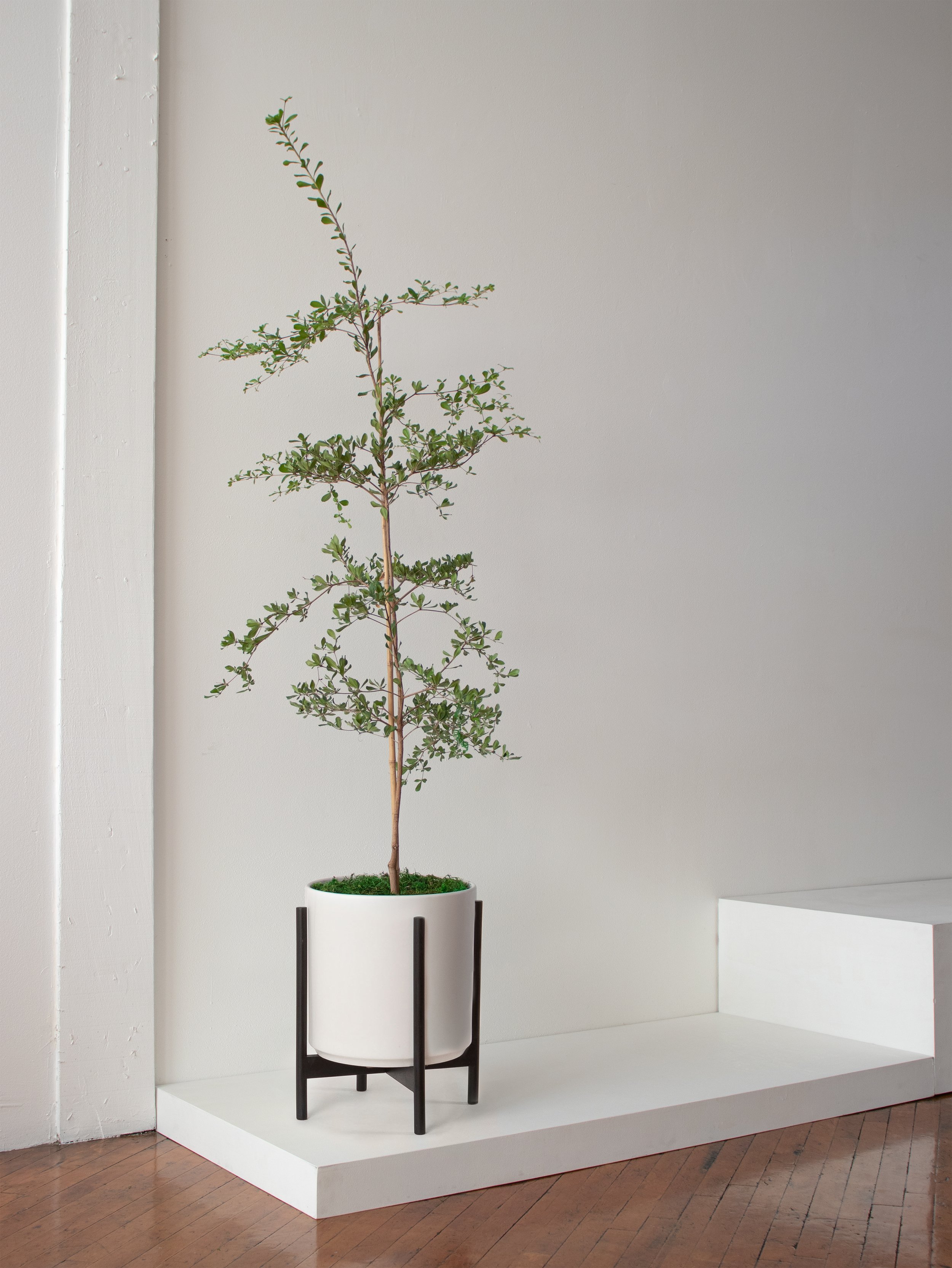A Complete Black Olive Tree AKA Shady Lady Care Guide
The Black Olive Tree, also known as bucida buceras or Shady Lady Olive Tree is a gorgeous indoor plant native to tropical regions and is known for its dark, glossy leaves and durable bark. Not to be confused with the regular Olive Tree, the Black Olive Tree does not actually produce any fruit, and in fact is not even an olive tree! Given this name simply for its airy, olive tree-like appearance, this plant is an excellent indoor alternative to its close cousin who prefers to be outdoors.
Light requirements for the Black Olive Tree
Black Olive Trees need at least 6-8, preferably 10 hours of unobstructed direct sunlight a day. It can be placed either outside in full-sun, partial shade, or indoors by a south-facing window. All of the foliage should be exposed to direct light to maintain a full, lush canopy.
How to water your Black Olive Tree
Black Olive Trees require a lot of water when they first acclimate to a new environment. After a few weeks, you’ll start to see how fast your tree is drinking. Allow your Black Olive Tree to dry in between waterings, and water thoroughly when the top 2-3 inches of soil is completely dry, usually once every 5-7 days. The frequency of watering depends on where your tree is placed and how much direct sunlight it is receiving. Avoid overwatering, and note that your watering schedule may be less frequent during winter months.
Are Black Olive Trees fast growers?
Black Olive Trees are relatively slow growers, and will grow even more slowly indoors. An ideal plant for a chic indoor setting, it requires very little maintenance over time!
Potion Magique
An all-natural elixir to add to your misting routine, providing extra nutrition and pest control for your plants through their foliage.
$28
Common problems with the Black Olive Tree
Leaf drop
The Black Olive Tree is prone to leaf drop, particularly with environmental changes, inconsistent care, or changing seasons. You may see your plant drop all its leaves—and very quickly—causing understandable alarm and concern. However, if your plant is receiving the care it requires, then there is nothing to worry about: sudden leaf drop is normal for the Black Olive Tree and the leaves usually grow back with some time. If you’d like to speed up the process, expose your plant to more light by either shifting its position in your home (or putting it outdoors if that’s an option for you), or investing in a grow light.
How to maintain a beautiful and healthy Black Olive Tree
Take care of your Black Olive Tree and it will take care of you! Below are simple tips to continue caring for your Black Olive Tree or bucida buceras over time.
Fertilizing - Fertilize during the growing season (spring and summer) every 6-8 weeks, using a balanced, slow-release fertilizer.
Pruning & Shaping - Remove dry or dead leaves all year round, but save any major pruning for late winter or early spring. It’s important to thin out the canopy to improve air circulation and maintain its shape. Use clean, sharp pruning shears to prevent damage to the tree and spread of disease.
Cleaning - The Black Olive Tree is not an easy one to clean! Keep your plant dust-free by regularly misting.
Repotting - Houseplants grow much slower than they would in the wild. Depending on the size of your plant and the density of the roots, this is nice to do every 2-3 years to provide fresh nutrients and encourage new growth.
When to repot - Repot your plant with fresh soil once every 2-3 years.
Pot sizing - if you want your plant to grow taller, find a nursery pot that’s 2” in diameter larger than the current pot. If you want your plant to stay the same height, you can reuse the same pot and simply change the soil.
Get your hands dirty - remove the plant from the pot and shake off as much of the old soil as possible so that you have clean roots. Place the plant in the center of the pot, add new soil and pat down firmly. Water the soil thoroughly and place the plant in an area with bright indirect light. Your plant will take 2-4 weeks to settle from the shock and adjust to its new home.
By following these care guidelines, you can ensure that your Black Olive Tree remains healthy and thrives in its environment.
Black Olive Tree
Airy and bonsai-like, and a beautiful addition to any style and space.


